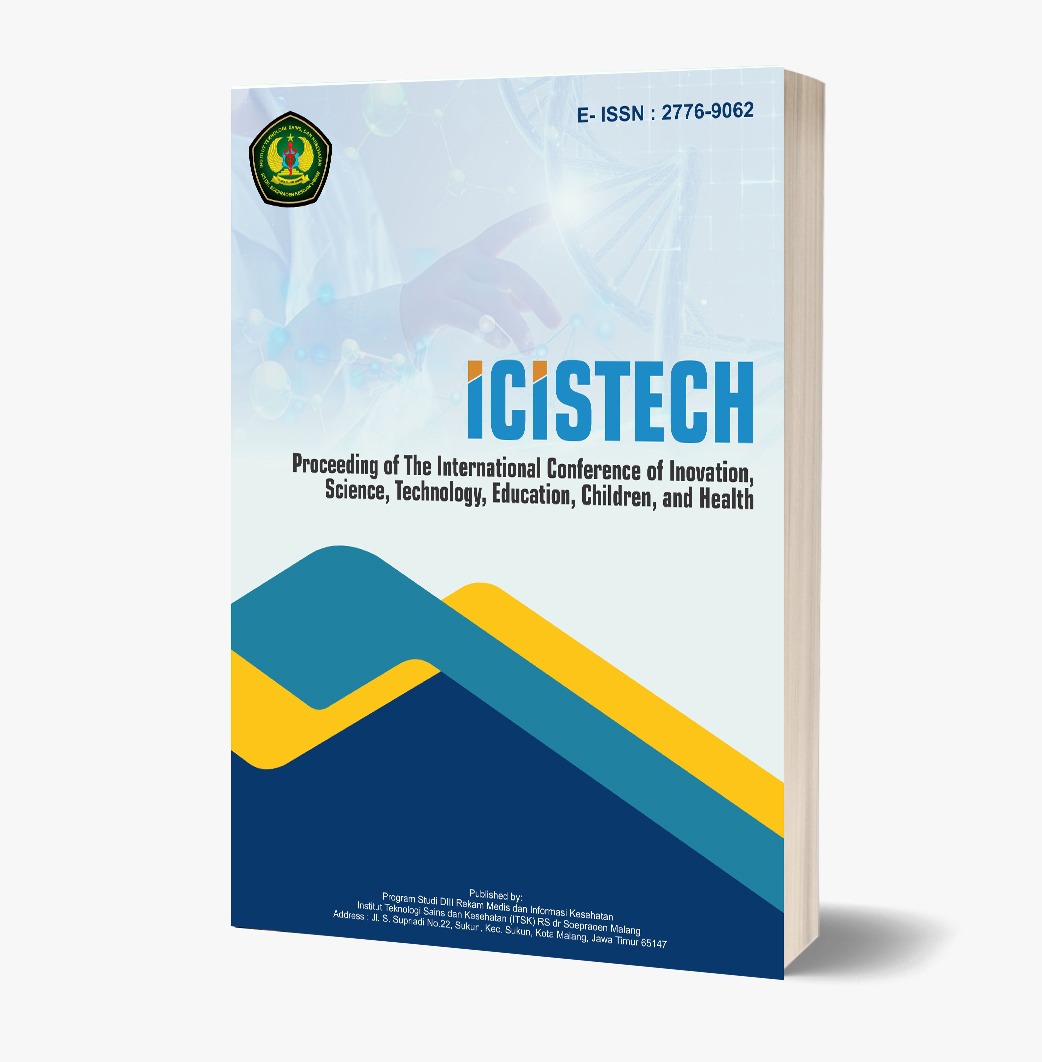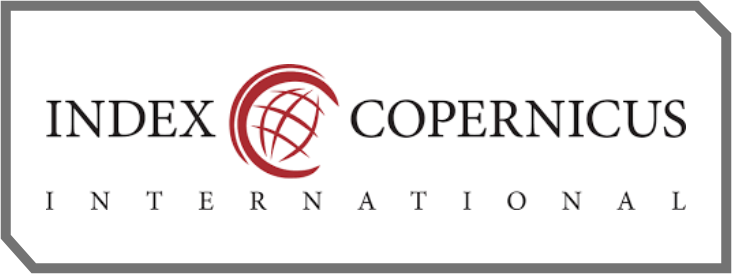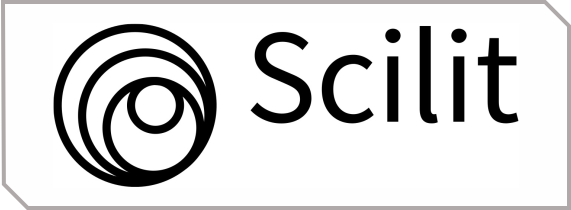Relationship Between 3-Month Injection Contraception and Breast Milk Production
DOI:
https://doi.org/10.62951/icistech.v5i1.247Keywords:
Exclusive Feeding, Injectable Contraceptive, Milk ProductionAbstract
Exclusive breastfeeding is a practice where infants are fed only breast milk, without additional food, drink, or water, for the first six months of life. This practice is crucial for the infant’s growth and development. One factor that may affect breast milk production is the use of contraceptives, particularly the 3-month injection. This study aims to determine the relationship between the use of 3-month injections and the adequacy of exclusive breast milk production in mothers of children aged 7 to 23 months. A cross-sectional study design was employed, utilizing both primary and secondary data. The sample consisted of 72 mothers with children aged 7–23 months, of whom some used 3-month contraceptive injections and others did not. The data collected from the participants included their contraceptive usage and breast milk production status. The results showed that 29 out of 36 mothers (80.6%) who used 3-month injections still produced adequate amounts of breast milk. A bivariate analysis revealed a statistically significant relationship between the use of 3-month injections and the adequacy of exclusive breast milk production, with a p-value of 0.039. This finding suggests that, while most mothers who use 3-month injections still have sufficient breast milk production, there is a clear relationship between the use of contraceptive injections and the adequacy of milk. It is important to note that while the majority of mothers on 3-month injections maintained adequate milk production, the choice of contraceptive method during breastfeeding should still be carefully considered. Health workers play a vital role in providing guidance to ensure the best choice of contraception for breastfeeding mothers to support both maternal and infant health.
References
Afik, A. (2018). The relationship between response time and patient survival with emergency treatment by the Code Blue Team. Indian Journal of Public Health Research and Development, 9(11), 1803-1807. https://doi.org/10.5958/0976-5506.2018.01707.2
Boa, G. F., Bata, V. A., Saghu, M. M. P., & Widyastuti, R. (2024). The knowledge and socio-economic relationships of mothers with exclusive breastfeeding. 10(10), 1009-1015. https://doi.org/10.33024/jkm.v10i10.17868
Carretero-Krug, A., Montero-Bravo, A., Morais-Moreno, C., Puga, A. M., Samaniego-Vaesken, M. de L., Partearroyo, T., & Varela-Moreiras, G. (2024). Nutritional status of breastfeeding mothers and impact of diet and dietary supplementation: A narrative review. Nutrients, 16(2), 1-28. https://doi.org/10.3390/nu16020301
Gallo, M. F., Schumacher, F. L., Lawley, M., Keim, S. A., Dupper, A. C., & Keder, L. (2024). Potential effect of immediate postpartum use of injectable contraception on lactogenesis. Contraception, 1-17. https://doi.org/10.1016/j.contraception.2024.110726
Gilley, S. P., & Krebs, N. F. (2020). Infant nutrition. Present Knowledge in Nutrition: Clinical and Applied Topics in Nutrition, 3-22. https://doi.org/10.1016/B978-0-12-818460-8.00001-0
Hastuti, A. (2023). Exclusive breastfeeding: Indonesian mothers awareness in providing exclusive breastfeed. AKADEMIK: Jurnal Mahasiswa Humanis, 3(1), 1-9. https://doi.org/10.37481/jmh.v3i1.567
Malwela, T. (2018). Midwifery practice guidelines to promote quality care of preterm babies in resource-limited obstetric units of Limpopo Province, South Africa. August.
Mardhika, A., Altas, R. I., Fadliyah, L., Sulpat, E., Tyas, A. P. M., & Medawati, R. (2022). Description of knowledge in exclusive breastfeeding mothers at Sukomulyo Community Health Center, Gresik. Journal of Vocational Nursing, 3(2), 110-115. https://doi.org/10.20473/jovin.v3i2.39399
Maritalia, D., Tambunan, H., & Malia, A. (2025). The influence of parity status on mother's behavior in providing exclusive breastfeeding. 13(1), 43-48. https://doi.org/10.36858/jkds.v13i1.738
Nathalia, A., Rahmawati, D., Nastiti, K., & Salmarini, D. D. (2024). Factors influencing the occurrence of exclusive breastfeeding failure in six-month-old infants. Health Sciences International Journal, 2(2), 96-103. https://doi.org/10.71357/hsij.v2i2.31
NCBI. (2021). Medroxyprogesterone acetate drug levels and effects in breastfed infants. Md, 1-6.
Singhal, S., Sarda, N., Gupta, S., & Goel, S. (2014). Impact of injectable progestogen contraception in early puerperium on lactation and infant health. Journal of Clinical and Diagnostic Research, 8(3), 69-72. https://doi.org/10.7860/JCDR/2014/7775.4110
Szyller, H., Antosz, K., Batko, J., Mytych, A., Dziedziak, M., Wrześniewska, M., Braksator, J., & Pytrus, T. (2024). Child's health and development, literature review.
Wahyuni, R. S., & Hutasoit, E. S. (2023). The correlation of the use of hormonal contraception devices and breastfeeding production in breastfeeding mothers at Puskesmas Rejosari Pekanbaru. Proceeding of the 2nd Payung Negeri International Health Conference, 2(1), 299-304.
Widyawati, R. S., & Sulaiman, I. (2023). The effects of family support and maternal nutrition on exclusive breastfeeding success in rural areas. Journal of Maternal and Child Health, 8(2), 77-85. https://doi.org/10.1016/j.jmch.2023.04.001
Downloads
Published
How to Cite
Issue
Section
License
Copyright (c) 2025 Proceeding of The International Conference of Inovation, Science, Technology, Education, Children, and Health

This work is licensed under a Creative Commons Attribution-ShareAlike 4.0 International License.













